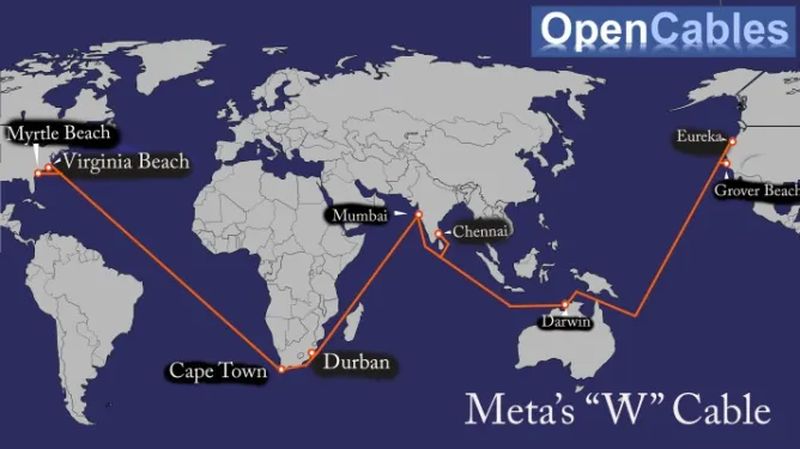Meta Platforms Inc. plans to invest over $10 billion in a new fiber-optic subsea cable that will span more than 40,000 kilometers around the globe, according to a TechCrunch report. The project aims to enhance control over internet infrastructure, as Meta seeks to support its extensive user base across platforms like Facebook, Instagram, and WhatsApp.
Meta to invest over $10 billion in subsea cable project
According to sources, this ambitious initiative will allow Meta to become the sole owner of the cable, a first for the company, which currently co-owns 16 existing networks, including the 2Africa cable. The new cable is expected to link the east coast of the United States to India, via South Africa, and then back to the west coast of the U.S. through Australia, forming a “W” shape around the globe.
The planning phase is underway, with the company set to unveil further details in early 2025, including the route and capacity of the cable. However, due to the limited number of companies capable of managing such infrastructure and the high demand for their services, it could take years before the cable is fully operational.
Meta’s decision to construct its own subsea cable marks a moment for industry norms, where telecom carriers typically collaborate on such projects. Santosh Janardhan, Meta’s head of global infrastructure and co-head of engineering, is leading the efforts, which are primarily based at Meta’s office in South Africa.
As Meta aims to meet the demands of its growing international user base, the cable will provide a direct line for the vast amounts of traffic generated by its platforms, which contribute to 10% of all fixed internet and 22% of all mobile traffic globally. This move is significant, given that the company earns more revenue outside North America than within its home market.

Meta’s investment in subsea cables serves multiple strategic purposes. By controlling dedicated capacity, Meta can ensure better service quality for its global users, particularly as it anticipates growth in artificial intelligence functionalities across its platforms. It is still unclear if the cable will directly support AI initiatives, but India has been identified as a critical landing point due to its projected data center expansion and large user base.
Economic factors also come into play; it has been reported that Meta’s previous subsea investments have contributed significantly to local economies. The company asserts that projects like Marea in Europe have added over “half a trillion dollars” to connected regions, further incentivizing their infrastructure investments.
In a geopolitical context, the planned route steers clear of areas prone to conflict, such as the Red Sea and South China Sea, circumventing major single points of failure. Recent incidents of damaged cables in these regions underline the need for more secure routes.
Meta faces €800 million fine for market abuse in Europe
Experts note a tight supply of cable-laying ships, leading to challenges in scheduling construction. The complexity and extended timeline suggest that the project may be executed in segments, rather than as a whole.
Traditional telecom carriers have historically dominated this space. Ownership empowers companies like Meta to directly control the quality of service provided to their end users. This subsea cable project could play a huge role in Meta’s future service capabilities, especially as tech giants navigate the challenges posed by conventional telecom paradigms.
Investigations continue into the specifics of the project and its implications, with further updates expected in early 2025.
Featured image credit: Kerem Gülen/Ideogram





